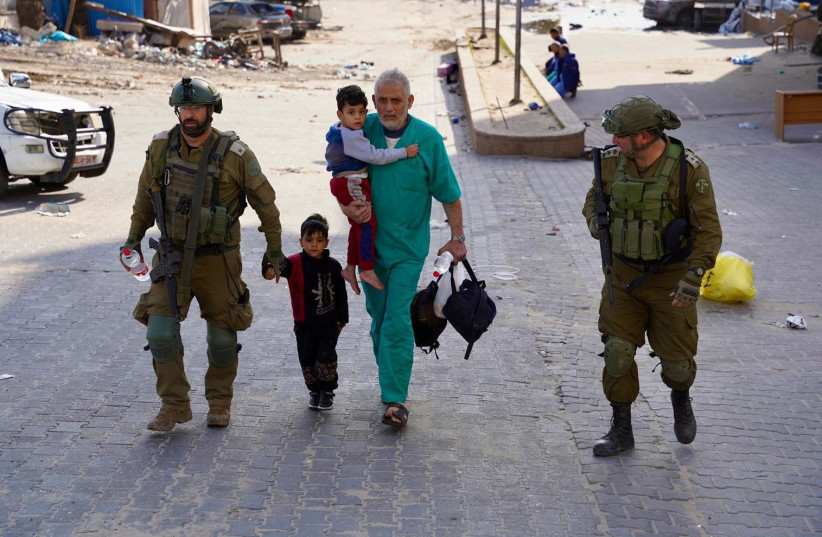IDF sources: Replacement for Hamas won’t work while Sinwar lives
Although aspects of running Gaza can be propped up in the near future, finding a full solution to replacing Hamas as the Strip’s ruler will not work until Gaza Chief Yahya Sinwar is dead, say IDF sources.
The current Israeli plan to replace Hamas with local clans can potentially eventually work on a limited neighborhood by neighborhood basis, but to reunite Gaza back together into a functioning fabric, Gazans will need to be convinced that Hamas cannot return by virtue of Sinwar’s removal.
One example of a major change that could take place even while Sinwar still lives is the replacement of UNRWA as the main humanitarian aid organization in Gaza.
Replacing UNRWA with the World Food Program
Already the World Food Program has taken over around 50% of food deliveries in Gaza, and the IDF says that it can take on an even larger and decisive role in food security in the future.
For example, there are expectations that the WFP will be bringing food to northern Gaza, the area where food security is most problematic, in the near future.
Also, the UN has moved $300 million in food purchases to the WFP for the future.

Besides the WFP, the IDF said there are a variety of other organizations which can replace different aspects of what UNRWA has done in Gaza, such as: WCK, KFW, JICA, UNMAS, USAID.
Despite these possibilities and despite the significant proof the IDF has brought of UNRWA employees involvement with Hamas, there are concerns in the IDF that much of the world is getting ready to return to supporting the organization after some weeks where its fate was more in limbo.
Part of the issue is the Western perception, which the IDF says is wrong, of an ongoing famine in Gaza.
According to the IDF, Gaza should no longer be analyzed as one unit, but much like it has been separated for military purposes, the humanitarian picture should also be assessed by region, and even based on smaller local areas.
The IDF says that the food and medical centers situation in central Gaza, where there are around 500,000 Gazans, is mainly stable, even though clearly not at normal levels.
In contrast, in southern Gaza areas (besides Rafah which has not yet been invaded) the food situation and medical centers situation is more challenging, but the IDF says that it is already improving following the main fighting in those areas concluding in early February. Rafah is also relatively stable, though overwhelmed in terms of volume, and certainly the food situation is not at normal levels.
Between Rafah and the rest of southern Gaza, there are 1,4 million Palestinians,
The harshest situation is for 300,000 Palestinians in northern Gaza, where handing out food is stil sometimes being disrupted by Hamas or, for two weeks in February, by Israeli protesters.
Moreover, the medical centers’ situation in northern Gaza is also currently severely limited to providing first aid.
The IDF did not have new details about the US efforts to bring in maritime aid.
However, the IDF has future plans to facilitate the delivery of maritime aid, even as those plans are still developing.
To date, the IDF says it has facilitated humanitarian aid from third parties to Palestinian civilians containing 198,000 tons of food, 29,500 tons of water, and 16,000 trucks from the various crossings.





Comments are closed.